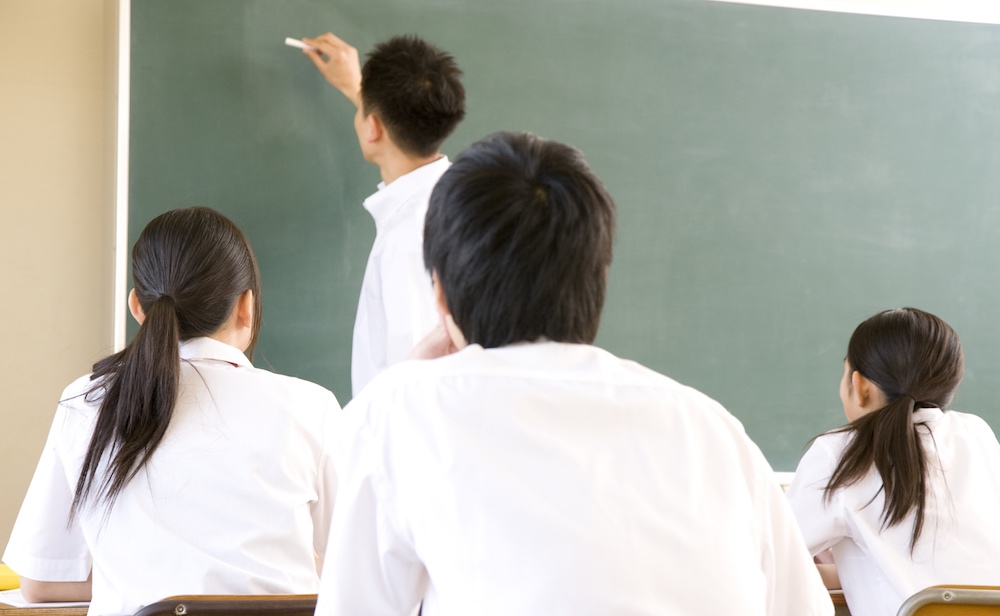
Selective high schools in Australia are both popular and controversial. Many more children seek enrolment in them than gain entry.
Public commentary since the late 1990s has accused these schools of being both hijacked by private coaching colleges, and racially unbalanced — enrolling disproportionate numbers of “Asian” students.
To properly understand the nature of selective schools today, you have to go back to when they first opened.
Why do we have selective schools?
Selective schools have never operated in isolation from broader historical forces — including Australia’s connected histories of racial exclusion and immigration.
The selective school system in New South Wales, for example, which has the largest concentration and longest history of selective schooling, is a relic of when secondary schooling was the destination of only a minority of young people, mostly from the middle or upper classes.
Secondary schooling was not universal in Australia before the 1960s, and it was only in the 1980s that everyone had the opportunity to complete Year 12.
The NSW selective high schools system was founded between the 1880s and the 1910s.
The schools were to offer students a meritocratic “ladder of opportunity”. That is, they would be open to everyone, regardless of wealth or social class, so long as academic entry requirements were met. This, and the absence of religious criteria, set them apart from private schools.
[pro_ad_display_adzone id=”5852″ align=”left” padding=”3″]Selecting whiteness
However, the foundations of selective schooling in Australia were always deeply raced and classed.
Despite being accessed by many working class students, their credentials were geared towards middle class occupational groups. And their essential whiteness was ensured by several factors:
Their establishment period coincided with the establishment of the White Australia Policy, which restricted non-Europeans from migrating to Australia.
Aboriginal children could be legally excluded from the feeder primary schools and often were.
White Protestant middle class cultures of the time dominated both the entry tests and the curriculum inside the schools.
Non-British migrants arrived in Australia in larger numbers from late 1940s. As early as the 1930s, many children of European Jewish refugees attended selective high schools.
But from the 1960s to the 1980s, the children of non-English speaking migrant families were more often categorised as educationally disadvantaged, and rarely seen as “displacing” the academic opportunities of Anglo-Australians.
Falling out of favour
During the 1960s and 1970s, selective schools fell out of favour with policymakers and many parents. They were mostly replaced by comprehensive high schools, which enrolled all students within a given area, no matter their test scores.
Selective high schools were disparaged as old fashioned and elitist. It was also argued that selection at the age of 11 or 12 was too young to set children on a certain path.
The revival
The revival of selective schooling from the late 1980s accompanied a new commitment by the NSW state government to the education of the “talented” child.
Academically gifted children, it was argued, were neglected in the one-size-fits-all classroom.
During the same period many white, middle-class families moved to private secondary schooling, responding to policies of “school choice”.
Both these developments coincided with increased middle class migration from east and South East Asia.
Coded racism in media commentary
By the late 1990s, Australian print media began focusing on the dominance of Asian students in selective school entrance examinations, and on the impact of “too many Asians” on schooling cultures.
The resurgence of white nationalist politics at the time was relevant to these debates. Such politics sought to normalise the whiteness of institutions like schools.
Our analysis of media coverage in the early 2000s uncovers the coded racism that underpinned public anxieties about selective schools.
Media commentary focused on the “fairness” of the selection process itself, indicating that Asian students were using coaching services to gain an unfair advantage.
Our research into the use of academic coaching by Chinese-Australian families demonstrates that far from “gaming” the system, parents were attempting to mitigate the disadvantages produced by a competitive, marketised, and culturally biased school system.
The need for historical awareness
Since the late 1990s, public commentary about selective schooling has often failed to address historical complexity in at least two ways.
Firstly, it tends to use the category of “Asian” in sweeping cultural terms rather than in reference to historically differentiated people.
Asians are cast as a singular group who are then made an easy target of blame for the unfairness of the system.
Secondly, the history of selective schooling is often misunderstood, containing uncritical assumptions about the “good” of a meritocratic system. There tends to be a silence around the histories of racialisedexclusions in education and in selective education in particular.
“Asians” in selective schools are positioned as interlopers or breakers of heritage, and other non-white groups including Indigenous Australians tend to be rendered invisible altogether.
We need public debate that challenges – not normalises – the conditions of white privilege in a multicultural settler-colony, not least within our education system.
![]() This article was written by Helen Proctor, Associate professor, University of Sydney and Arathi Sriprakash, Lecturer in Sociology of Education, University of Cambridge. First published on The Conversation.
This article was written by Helen Proctor, Associate professor, University of Sydney and Arathi Sriprakash, Lecturer in Sociology of Education, University of Cambridge. First published on The Conversation.







